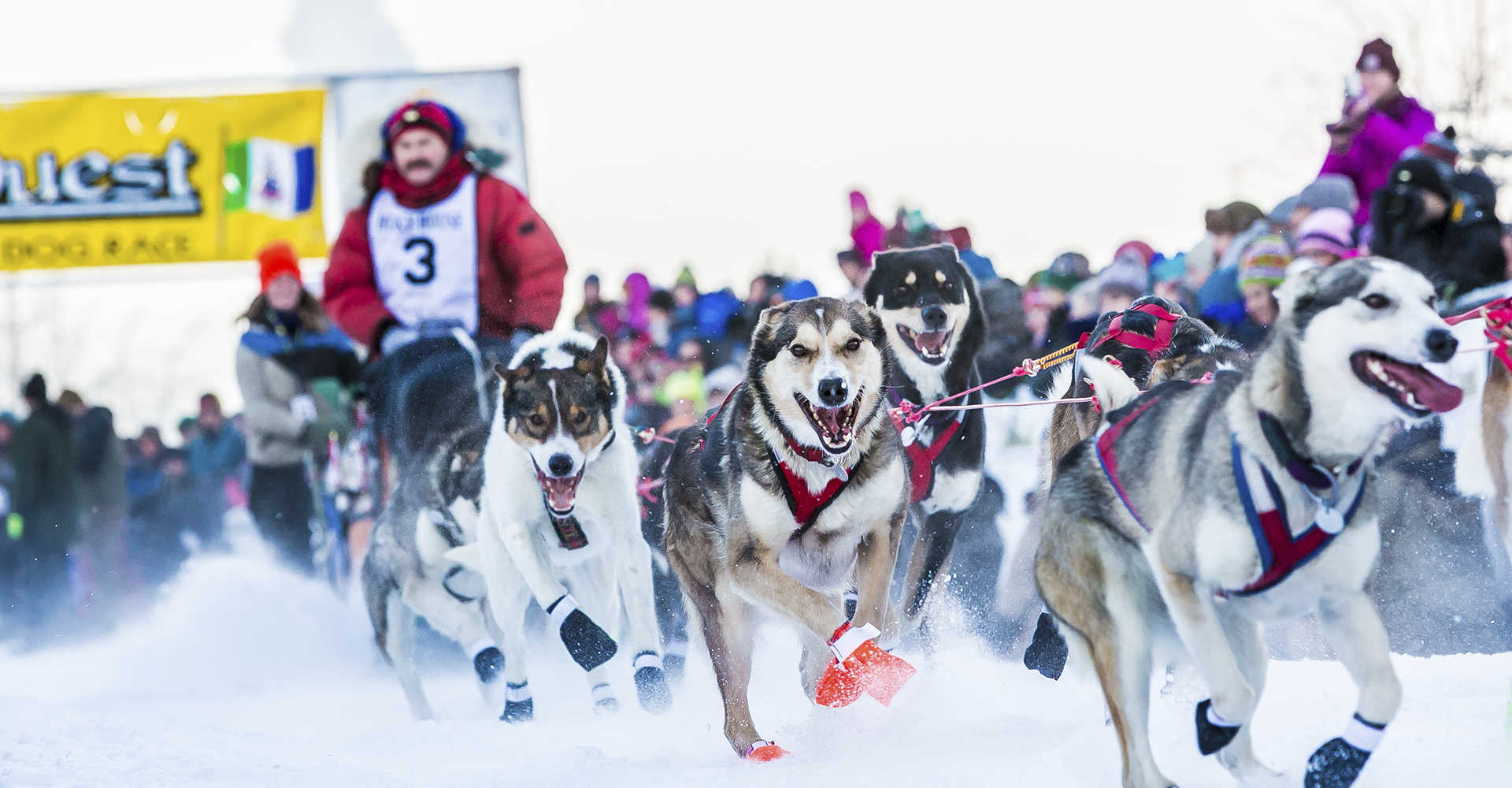
Dog sledding is a fascinating winter sport that has captivated the hearts of adventurers and animal lovers alike. This thrilling activity combines the beauty of nature, the camaraderie of a team, and the agility of our four-legged friends. Whether you dream of racing through snowy landscapes or simply want to learn more about this unique sport, we’ve got you covered.
In this article, we will uncover 19 fascinating facts about dog sledding. From the history and origins of the sport to the types of sled dogs and the equipment used, we’ll delve into the exciting world of mushing. So, buckle up, put on your warmest coat, and get ready to embark on a journey through the icy trails of dog sledding!
Key Takeaways:
- Dog sledding is an ancient sport that requires proper training and care for the dogs. It promotes a unique bond between mushers and their furry teammates, making it a thrilling and heartwarming adventure for all.
- Dog sledding isn’t just for winter! It’s a year-round activity that offers tours for beginners and showcases the athleticism of sled dogs. With modern technology enhancing the sport, it’s an exhilarating experience for adventurers of all kinds.
Dog sledding originated over 4,000 years ago.
One of the oldest forms of transportation, dog sledding can be traced back to ancient cultures in the Arctic regions. It was used by indigenous communities for hunting, transportation, and communication.
Dog sledding is a popular sport in countries with cold climates.
Countries such as Canada, Alaska, Norway, and Greenland are known for their dog sledding traditions. The sport is not only a thrilling adventure but also a way to connect with nature and preserve cultural heritage.
Teams of dogs are harnessed to a sled.
Typically, a team consists of around 8-14 dogs. The lead dog sets the pace, followed by the swing dogs, who help steer the sled, and the wheel dogs, who provide the power to pull the load.
Huskies are the most common breed used for dog sledding.
Known for their endurance and strength, Siberian Huskies and Alaskan Huskies are popular choices for sledding. These breeds have well-adapted traits, including a thick coat, strong muscles, and the ability to withstand low temperatures.
The Iditarod Trail Sled Dog Race is the most famous dog sledding event.
Spanning over 1,000 miles in Alaska, the annual Iditarod race is a grueling competition that tests the skill and stamina of mushers and their dog teams. It attracts participants from all over the world.
Dog sledding is not just a winter activity.
While most people associate dog sledding with snow and ice, it can also be enjoyed during other seasons. In regions with colder climates, dog sledding can be experienced year-round, with specially designed sleds for off-season conditions.
Dog sledding requires proper training and care of the dogs.
Mushers, the dog sledding drivers, spend countless hours training their teams and ensuring their well-being. This includes proper nutrition, conditioning exercises, and regular veterinary check-ups to keep the dogs healthy and fit.
Dog sledding promotes a unique bond between mushers and their dogs.
Being a musher is not just about giving commands or controlling the sled. It involves building a deep trust and connection with the dogs, understanding their body language, and working together as a team.
The longest dog sledding race is the Yukon Quest.
The Yukon Quest is an intense 1,000-mile race that follows the historic Gold Rush and mail delivery routes between Whitehorse, Yukon, and Fairbanks, Alaska. It tests the physical and mental endurance of both mushers and dogs.
Competitive dog sledding requires strategic planning and navigation skills.
Mushers must study maps, understand weather patterns, and make critical decisions during races. They need to carefully manage their dogs’ energy levels and anticipate challenges along the trail.
There are dog sledding tours available for beginners.
If you’re new to dog sledding, don’t worry! Many outfitters offer guided tours, where you can experience the thrill of mushing through scenic landscapes while learning about the history and techniques of the sport.
Some dog sledding tours include a chance to meet and cuddle with the dogs.
Interacting with the dogs is often a highlight of dog sledding tours. You can learn about each dog’s personality, help harness and unharness them, and even give them a well-deserved treat after the ride.
Dog sledding has been adapted for recreational purposes.
Besides competitive racing, dog sledding has become a popular recreational activity for tourists. It allows them to experience the joy of being pulled by a team of enthusiastic dogs, immersing themselves in the winter wonderland.
Modern dog sleds are made from lightweight materials.
Unlike traditional sleds, modern dog sleds are designed to be lightweight yet sturdy. They are often constructed using aluminum or carbon fiber for better maneuverability and speed.
Sled dogs are bred and trained specifically for the sport.
From a young age, sled dogs undergo specialized training to develop their pulling skills and endurance. They thrive on the physical and mental challenges that dog sledding provides.
Dog sledding contributes to the conservation of sled dog breeds.
By participating in dog sledding activities and supporting responsible breeding programs, enthusiasts and organizations help preserve sled dog breeds and their distinct genetic traits.
Dog sledding is not just for humans.
Some dogs participate in recreational dog sledding events and races on their own, showcasing their skills and athleticism. These races allow dogs to enjoy the excitement and exercise alongside their human counterparts.
Technology has enhanced the sport of dog sledding.
In recent years, advancements in equipment, such as GPS trackers and lightweight gear, have made dog sledding safer and more efficient. These tools help mushers navigate and monitor their progress during races.
The thrill of dog sledding draws adventurers from all walks of life.
Whether you’re an adrenaline junkie seeking an exhilarating experience or a nature lover wanting to connect with the great outdoors, dog sledding offers a unique and unforgettable adventure for people of all interests and backgrounds.
Conclusion
In conclusion, dog sledding is a fascinating and thrilling sport that has a rich history and continues to captivate people all over the world. From its origins as a means of transportation in cold regions to its modern-day status as a popular recreational activity, dog sledding offers a unique and unforgettable experience. Whether you’re a dog lover, an adventure seeker, or simply interested in learning about different sports, dog sledding is definitely worth exploring. So why not bundle up, hop on a sled, and embark on a remarkable journey through snow-covered landscapes with a team of enthusiastic and dedicated canine athletes? Experience the thrill, connect with nature, and create memories that will last a lifetime. Happy mushing!
FAQs
Q: How long has dog sledding been around?
A: Dog sledding has been around for thousands of years, with evidence dating back to ancient civilizations such as the Inuit and native Siberian tribes.
Q: How many dogs are typically used for sledding?
A: The number of dogs used for sledding varies depending on factors such as the terrain, distance, and weight to be pulled. It can range from as few as two to as many as 20 or more dogs.
Q: Do the dogs enjoy sledding?
A: Yes, most sled dogs absolutely love sledding. They are bred and trained for this purpose, and pulling a sled is a natural and fulfilling activity for them.
Q: Is dog sledding only done in snowy regions?
A: Dog sledding is mostly associated with snowy regions, but it can also be done in areas with cold temperatures and suitable terrain, even if there isn’t a heavy snowfall.
Q: Can anyone go dog sledding?
A: Yes, anyone with a reasonable level of fitness and the willingness to learn can try dog sledding. However, it’s important to follow instructions, respect the dogs, and ensure the safety of both the musher and the dogs.
Hungry for more thrilling tales from the world of dog sledding? Satisfy your curiosity with our collection of captivating articles. From the basics of this ancient sport to the most extraordinary feats achieved by mushers and their loyal companions, we've got plenty of stories to keep you on the edge of your seat. Join us as we explore the rich history and modern-day excitement of international dog sled races, where teams from around the globe compete in some of the most challenging environments imaginable. Get ready to be inspired by the incredible bond between humans and their furry teammates, and discover why dog sledding continues to capture the hearts of adventurers everywhere.
Was this page helpful?
Our commitment to delivering trustworthy and engaging content is at the heart of what we do. Each fact on our site is contributed by real users like you, bringing a wealth of diverse insights and information. To ensure the highest standards of accuracy and reliability, our dedicated editors meticulously review each submission. This process guarantees that the facts we share are not only fascinating but also credible. Trust in our commitment to quality and authenticity as you explore and learn with us.


